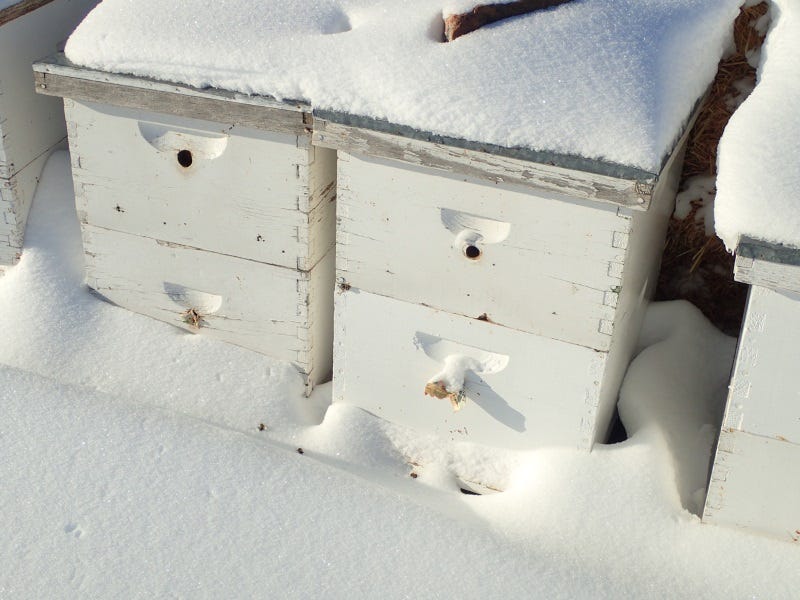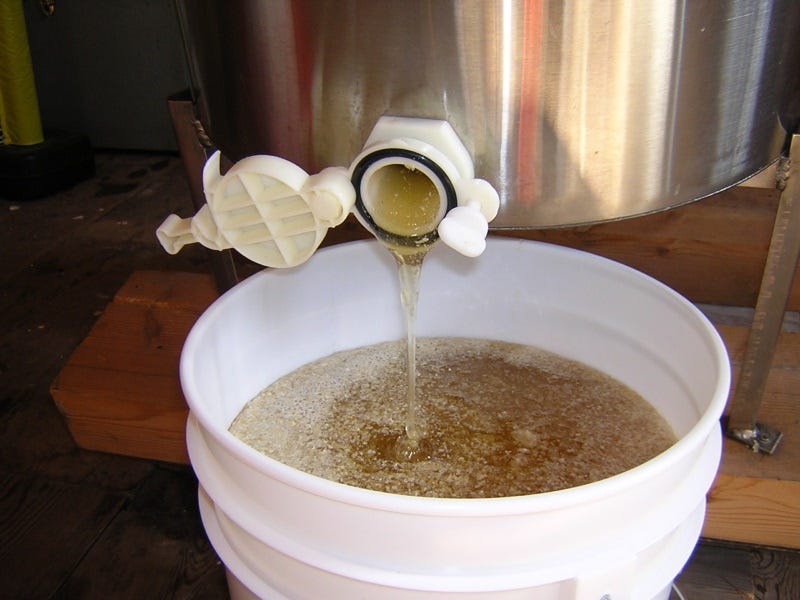Preparing Your Beehives for Winter: Best Practices for Cold Climates

As the day length wanes and bitter cold looms, honeybees need to be prepared for the long winter. Since they are active all winter, adequate resources and protection to pull through even the worst weather are critical to have in place now.
 Leave some honey in the hive for the bees.
Leave some honey in the hive for the bees.Leaving them with enough honey stores
When harvesting honey for the season, typically leave 80-100 pounds in northern regions for the colony to sustain themselves until spring arrives. The fascinating aspect of honey bees is they maintain the hive temperature at roughly 90°F, regardless of how cold it is outside. By clustering into essentially a super-organism with the queen in the center, instead of thousands of individuals, their wing muscles contract rapidly generating heat. If they are within reach of food, they can weather the worst conditions.
If there is less honey in the hive than will sustain them, many beekeepers supplement by feeding a 2:1 sugar to water syrup, although the bees won’t use it when it drops below 50°F. The next best option is placing fondant above the brood frames. This pliable sugar concoction is a decent substitute to pull them through scarce times, and can be added any time of the winter if reserves lessen.
 Straw bales and protection along the western and northern sides.
Straw bales and protection along the western and northern sides.Protecting the hives from the elements
Keeping the hive at such a warm temperature requires considerable energy, which is why anything you can do to mitigate the extremes is helpful. Ideal conditions for many areas in the North means storing them inside a building like the Slovenian beekeepers have done for centuries. But if this isn’t possible, situate them next to a structure or protect the western (and preferably northern) sides of the hive with straw bales to reduce impact from storms. Snow is a benefit in many situations, but the wind can chill a hive in short order.
Snow piling around the hives is not an issue, if the ventilation holes (typically in the top box) are still open. Clear the front of hives if they are completely covered.
Wrap the hives
In particularly harsh situations where the hives are exposed to the elements with little protection, wrapping the hives with tar paper and sometimes attaching rigid foam insulation can be enough to reduce winter losses.
Wrapping the hive with tar paper doesn’t insulate the hive, but it reduces the wind chill effect, and during sunny days, the black paper does warm the hive. You can staple the paper directly to the hive body or fasten it with 1-by-2 inch pieces of lumber.
The rigid foam insulation does help the hive retain heat causing them to theoretically be able to move within the hive staying close to the honey reserves. Nothing is more frustrating than knowing there is ample honey, yet discovering the colony starved to death because it was too cold for them to move to it. Cut the foam to cover both hive boxes and hold the pieces fast to the hive using bungee cords.
 Hives in the winter. Dead bees in front.
Hives in the winter. Dead bees in front.Insulate the top and provide ventilation
Whether you insulate the entire hive, or not, it’s a good idea to add a ½ to ¾ inch piece of insulation underneath your inner cover to reduce the amount of condensation. If the lid seems a little tight with this type of insulation, use a spare honey shallow as an insulated roof. Set it on top of the telescoping cover and add materials such as rigid insulation or even wool batting.
Moisture is one of the greatest detriments to the winter hive because it builds up quickly and can freeze, or in warmer regions, causes mold issues. Besides insulating the top, drill three to four ¼-inch ventilation holes in the upper box to allow moisture to escape.
 Hives with a ventilation hole in the top box.
Hives with a ventilation hole in the top box.Reduce the entrance
The winter hive is a delicate balance of helping the bees stay warm while not hindering air flow. To minimize chilling the bottom of the hive, use a specific entrance reducer or place a couple of pieces of 1-by-1 inch wood to allow only two to three inches open at the hive entrance. Not only does this reduce the wind, it also minimizes the risk of mice and other unwanted visitors. And if mice are an issue, make a simple deterrent by tacking in a few finish nails at the entrance close enough that they can’t slip through, but the bees can find their way out.
 Don't be alarmed if you see dead bees in the snow.
Don't be alarmed if you see dead bees in the snow.Keep an eye on them
For the most part, the bees take care of themselves during the winter. Putting an ear to the hive will let you know if they are holding together and staying warm. And look for bees to take cleansing flights during warm, sunny days. They might also take advantage of mild weather to clear out the hive so don’t be alarmed if there are dead bees outside of the entrance.
If there is a warm up of at least 50°F, especially later in the season, make a brief examination of the hive to ensure the cluster is near a food source. Rearrange honey frames if necessary, and add fondant to the top of the hive if stores are running low.
 Healthy hives in the spring.
Healthy hives in the spring.Holding on until spring
Winter is a tenuous time for the hive. By preparing them as well as possible in the fall and being ready to feed them later in the winter, you stand a better chance of a healthy and vigorous hive in the spring.
